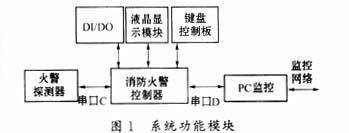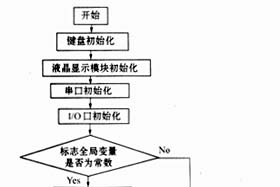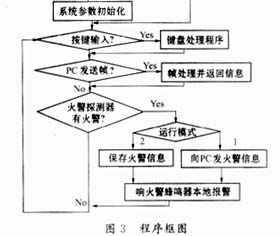Keywords: fire alarm, Rabbit2000 microprocessor, local area network
At present, in order to adapt to the needs of intelligent high-rise building fire protection systems, automatic fire alarm systems are moving towards monitoring and networking. The monitoring network conducts remote data collection and processing of the urban fire automatic alarm system through the public business telephone network, and has the functions of high reliability, decentralized control, centralized monitoring and management. The core basis of this system operation is the network fire alarm control system . This system can collect the fire alarm information of a certain area and send the alarm information to the fire network through the PC in time, so it is a bridge from the fire alarm system to the monitoring network. This system is designed with Rabbit2000 microprocessor as the core, and adopts modular and intelligent distributed system technology to design the network fire alarm control system, which meets the high reliability communication transmission and high real-time performance required by the monitoring network.
1 Introduction to Rabbit microprocessor Rabbit2000 microprocessor is an 8-bit microprocessor produced by Rabbit Semiconductor. It has a similar structure to Z80 series microprocessors and has high compatibility, but its performance has been greatly improved It has up to 40 general-purpose I / O pins, built-in calendar, clock, watchdog, timer, multi-level interrupt, dual DMA channels, and can be expanded from 4M to 8MFlash for data storage. Rabbit has outstanding computing speed, which is extremely important for real-time operating systems. For Rabbit2000, the development of traditional microprocessor hardware and software has been simplified, and online simulation is no longer required. A single interface cable can be used to connect the PC serial port and the target system based on Rabbit2000 to realize software development. Rabbit2000 has 4 serial ports and has strong networking communication capabilities. It can accurately generate pulses and edges, and can implement multi-priority interrupts. The processor speed and power consumption are under program control. When the processor continues to execute instructions, it can use ultra-low power mode to implement calculation and logic detection, which provides convenience for low-power design. Rabbit2000 can achieve cold start, so unprogrammed Flash memory can be connected in the appropriate place. Its RabbitCoreRCM2000 module contains Rabbit2000 microprocessor, large-capacity Flash and SRAM, built-in Ethernet interface, can be directly monitored through the network, with RS232 / 485 interface, can make various serial devices quickly connect to the network. Rabbit2000 microprocessor software development platform Dynamic C7.0 Premier integrates editing, compiling, linking, debugging, and downloading, and has a complete TCP / IP protocol stack, supports full-function RS232 / 485 communication, and is equipped with various I / O Drive function library, perfect file management system, data files can be established on Flash or SRAM to store system or user data.
2 System functional module design The system adopts a modular design. The main module unit is the RabbitCore RCM2000 module (as a fire and fire alarm controller) with a Rabbit2000 microprocessor, as well as a fire detector, keyboard control board, LCD display module, DI / DO and PC. The functional block diagram is shown in Figure 1.

The fire alarm controller module is used to monitor and control various functional components, perform network communication, data processing and data storage, and is the core of the entire system. The system is mainly composed of Rabbit2000 microprocessor, 256K × 8 Flash memory, 512K × 8 SRAM, I / O interface circuit, watchdog circuit, backup battery, power supply monitoring circuit, RTL8019AS Ethernet control chip and reset circuit. The system runs at a crystal frequency of 22.1MHz, with an operating voltage of 5V and an operating current of 140MA. The block diagram of its composition is shown in Figure 2.

The main task of the controller module is to communicate with the fire detector to obtain the fire alarm information in each area, so as to control the alarm system, and has certain fault detection and processing capabilities. The fire detector is connected to the RS485 bus which is suitable for long-distance transmission and has the ability to suppress common mode interference. The bus is connected to the serial port C of Rabbit2000, and up to 256 fire detectors can be connected. After the controller centrally processes the fire alarm information, the information is transmitted to the PC via another RS485 bus through the serial port D of Rabbit2000, or is queried by the PC. After obtaining the alarm information on the controller, the PC packages the alarm information according to a certain protocol format and transmits it to the fire protection network. 256 fire and fire alarm controllers can be connected to the RS485 bus connected to the PC, thus forming a tree-shaped network structure to form a local area network for monitoring fire alarm information, and the role of the PC here is equivalent to a gateway to alarm The information is transmitted to the external network. Here, the controller's Ethernet interface can also be used to communicate with the PC to expand system functionality. Among them, the keyboard control board is used to set system parameters, including various information such as the ID number, time parameters, and system operation mode of the module. The liquid crystal display module mainly displays the system time. When a fire alarm message arrives, it immediately displays the fire alarm address number. DI / DO mainly controls the buzzer and other equipment.


3 Working principle The whole system adopts bus communication, which can be connected to multiple fire and fire alarm controllers to communicate with PC. The system has two types of network nodes, one is a fire alarm controller node that communicates with the PC, and the other is a detector node that communicates with the fire alarm controller and the detector, thus forming a tree-structured network. The transmission protocol adopts a standardized data structure, is provided with BBC check digits, and adopts software fault tolerance technology to ensure the correctness of communication. The management software is provided with fault-tolerant traps, which can effectively eliminate the phenomenon of "death" or "false alarm" caused by random interference. The host computer is a PC, and its network ID number is 0. Each fire alarm controller has a unique ID number greater than 0 to form a local control network. When the standard protocol format is used for communication between the host and the controller, the information frame sent by it carries the ID number of the destination controller. If the ID number of the destination controller is 0, it is broadcast information, and each controller must Receive the frame and process it accordingly, otherwise only the controller with the same ID number as the destination controller will receive the frame and judge the frame format and CRC checksum. The fire alarm controller listens to the alarm information sent by the fire detector through the serial port C. If the information is the same as the previous information, the information is filtered, otherwise the alarm information is stored at the end of the database in the controller. In the case of a fire alarm, the alarm information of the fire detector carries the fire alarm address number and time information, while in the case of an automatic fault alarm, the alarm information consists of the fault address number and the fault level information. The controller has two operating modes. The first mode is bidirectional operation. When it receives the alarm information, it immediately forwards the information to the PC. The second mode is unidirectional operation. After receiving the alarm information, it is first stored in the controller's database This piece of information is only sent to the PC when the PC comes to query the fire alarm information. The PC sends the fire alarm information to the external fire network by the Winsock-based network program in the background.
4 Conclusion This article introduces the basic working principle of the new network fire alarm control system with Rabbit microprocessor as the core and the software and hardware design of the system. The system has strong network communication capabilities. Due to the use of high-performance microprocessors, the system has the characteristics of high real-time and fast and reliable communication, and the application value is high.
references
The function of Led Diving Flashlight has 1-5 modes, easy to change according to your situation where you stay at.
LED Diving Flashlight usually high power and super bright, when you go to dive, the brightest flashlight adapt for you.
The products are waterproof, shockproof and tactical, so you need not to worry about its quality.
Most of the products are simple on/off push button operation;
By the way, our products are saled with factory price, and the quality can guarantee, lastly we provide warranty for 1 year;
LED Diving Flashlight
High Power Led Flashlight,Rechargeable Led Flashlight,Zoomable Led Flashlight,Led Diving Flashlight
Ningbo Henglang Import & Export Co.,Ltd , https://www.odistarflashlight.com
